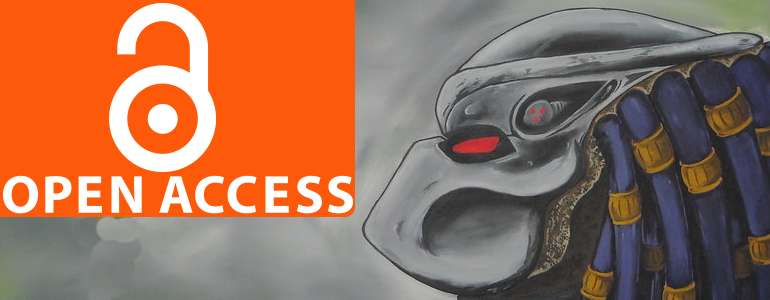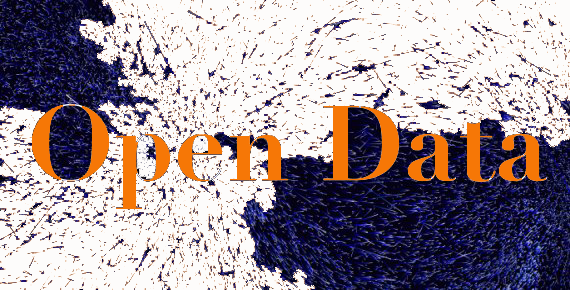
New Open Access Roadmap
New Open Access roadmap sets the goal for a fully open access world
The European University Association (EUA) came up with a new roadmap to assist European universities’ transition towards Open Access (OA). This OA roadmap, which sets the future direction of OA in European universities, is based on the EUA’s expert group agreement on Science 2.0 initiative, the EUA said.
The EUA’s new roadmap primarily focuses on open access to research publications; its prime focus’ areas are open access to research data, copyright, data protection, and text and data mining. The EUA plans to implement its roadmap in consultation with major stakeholders: universities, publishers and funding agencies.
According to the EUA, technological advancements ushered a new era of scholarly publishing, dissemination and consumption, which requires a change in the classical publishing model. The time is ripe for publishers to embrace new realities: publishing or accommodating open access. In this regard, the EUA is determined to facilitate a fair and transparent platform that serves all players.
In its effort to implement the roadmap, the EUA set its priority areas. In the coming twelve months, it has plans to monitor institutional OA policies and map the European Union’s OA landscape. It will also facilitate a platform for institutions’ dialogue, aimed at ‘sharing good practices of “big deal” negotiations’. These ‘big deal’, or bundle, negotiations help universities get better journal subscription fees deals with publishers. With the bundle negotiations, both universities and publishers get a chance to make a good deal: publishers sell their highly demanded journals along with low demanded journals in the same package, for a reasonable price for universities.
Moreover, the association hopes to engage in a dialogue with other pertinent stakeholders in the field. It will also support the development of European OA policies and infrastructures. The implementation of the roadmap, primarily in public universities, requires the support of politicians. That’s why the EUA has put a plan in place to engage politicians for ‘a fair, balanced and innovative publishing system’. This process of engagement might take different forms: seminars, dialogues and symposiums to create awareness of open access.
The EUA’s decision is a big boost for open access. Its roadmap has the potential to accelerate the move towards a fully open access world, while, at the same time, sends an unequivocal message to publishers who still favor the status quo. Moreover, it can be a triggering factor that other university associations (in America, Asia and Africa) will reproduce.

Diamond Open Access
Free to read and free to publish
The primary move towards Open Access is caused by a belief that the results of scientific research are a public good. Therefore, they should be available and accessible to all, regardless of citizens’ ability to pay. Over the years, the Open Access movement has challenged traditional (subscription based) publishers largely through introducing two alternatives: Gold and Green Open Access publishing models. This forced traditional publishers into making changes in their publishing practices.
Gold Open Access faces two challenges. First off, authors or institutions have to pay Article Processing Charges to get their materials published. That means they pay up front to get published materials later ‘for free’. So technically, what they get is not free. Secondly, the articles remain under embargo for a period between six months to one year. Paying for content and not making it accessible to everyone flies right in the face of the Open Access movement.
On the other end of the spectrum lies Green Open Access, which is totally free. There are neither subscription fees nor article processing fees attached to it. Still, there are weaknesses associated with this publishing model. Green Open Access articles are predominantly early pre-print versions of an article, meaning they have not undergone a journal’s rigorous peer review/editorial process yet. This can result in a lack of quality.
Many argue that both Gold and Green models face challenges that pose a threat to the sustainability of Open Access. The third model, Diamond Open Access, attempts to fill the gap left by the Gold and Green Open Access publishing models.
Diamond Open Access, its advocates argue, is an innovative Open Access model which addresses both cost and journal quality concerns. These are critical issues plaguing Open Access journals. For them it is the only model which guarantees the sustainability of open access publishing.
How the new model works
Journal articles published in Diamond Open Access journals have a lot in common with those published in Gold Open Access journals. They both have high quality peer review and editing processes. The principal difference lies in the absence of article processing fees. As mentioned above, the Gold model is made possible by these article processing fees, paid for by authors or institutions. Meanwhile, the Diamond model requires no article processing fees while maintaining journal quality. The emphasis of Diamond OA is on achieving academic goals: making knowledge production, dissemination and consumption as free as possible.
This is realized by volunteers, providing quality editorial and peer review services, who work relentlessly to advance science and to serve the needs of a science-hungry society. These volunteers can be individuals or non-profit organizations who either work for free or fund Diamond Open Access projects. Under the Diamond model both publishing and access to published materials is done free of charge. That means neither authors nor institutions have to pay to publish scholarly materials on Diamond Open Access journals. Moreover, individuals and institutions get access to the published materials for free. In a nutshell, Diamond model hopes to emulate the Wikipedia publishing model.
Incentives for volunteers
Diamond Open Access journals are made possible by batches of volunteers who do editing and reviewing without financial compensation. If this is the case, what are incentives for the potential volunteers? Advocates profess a strong belief that in the absence of financial compensation Diamond Open Access volunteers will still enjoy career benefits, prestige, and recognition from institutions for doing the work. These benefits combined with an earnest motivation to engage in scientific research publication and dissemination will attract plenty of volunteers to do the job.

Open Access vs Predator
Predatory Open Access publishers on the rise
The increase in so-called “predatory” Open Access publishers is posing a threat to the integrity of Open Access publishing. Predatory Open Access publishers charge authors high publishing fees without providing proper editorial and peer review services. They are abusing the opportunity created by the Gold Open Access publishing model which requires authors to pay article processing charges.
Since 2010 the number of predatory Open Access publishers has shown a sharp increase, according to Finland’s Hanken School of Economics. Authors of the research, Cenyu Shen and BO-Christer Bjork, found out that in 2014 alone predatory Open Access publishers had dumped more than 420,000 articles on the market. This shows a nearly 800% increase from the year 2010. The findings of the research are based on a detailed analysis of 613 Open Access journals.
The whole idea behind Open Access publishing is to give people free access to research output for the benefit of science and society. Unfortunately, some Open Access publishers are focused on serving individual or company interests. Their primary motive is to make a profit. Their existence poses a threat to Open Access publishing and the movement. Researchers and authors need to start identifying them.
There are various ways of identifying predatory Open Access publishers. Mr. Jeffrey Beall created a set of criteria for this: editorial quality, publishing standards, integrity and business management. He used these criteria, among many others, to label hundreds of journals as predatory ones. These criteria were used by the researchers to examine the practices of predatory Open Access publishers and also to find out the danger that they are posing to Open Access publishing in general.
Predatory Open Access publishers have developed faster and cheaper publishing models by drastically lowering the quality of their peer review and editing processes. On average they charge authors 178 USD to publish articles within 2 to 3 months from the date of submission. Meanwhile, the average time to publish an article on reputable Open Access journals is 5.9 months.
The research revealed that those predatory publishers mainly prey on authors from Asia and Africa. Nearly 77 percent of the authors exposed to such abuse are researchers from those two regions. India is where the vast majority of predatory publishers are based. This is not surprising at all, as nearly 35 percent of the authors who are abused by the predators are from the same country.
What exposes the authors from these regions to abuse on such a massive scale? Firstly, predatory publishers promise a fast track to publication. This is appealing to many researchers who would like to publish as many papers as possible. Publishing many papers is positively correlated with promotion and greater name recognition. Secondly, their article processing fees are on average far below the industry standard. Both factors are strong incentives for authors from developing regions choose a predatory publisher.
Coupled with the pre-existing concerns over the quality of Open Access journals, the damaging effect predatory publishers might have on Open Access can be far reaching; both in terms of quality and integrity. Shen and Bjork write, “Predatory publishers are causing unfounded negative publicity for Open Access publishing in general.” Perceived lack of quality of Open Access journals is already one of the major reasons mentioned by several authors not to publish on Open Access platforms. Doubtlessly, predatory Open Access publishers are aggravating the negative perceptions of articles published in Open Access, in addition to casting a big shadow over the quality and reputation of Open Access journals and publishers.
Authors can play a significant role in terms of identifying predatory Open Access publishers and denying them the opportunity to prosper. Taking necessary precautions against predatory Open Access publishing serves two purposes: First, it protects authors from the predators. Secondly, authors’ engagement helps protect the quality, integrity and reputation of Open Access publishing.
References:
Scholarly Open Access: Potential, possible, or probable predatory scholarly open-access publishers
Shen C, & Björk BC (2015). ‘Predatory’ open access: a longitudinal study of article volumes and market characteristics.BMC medicine, 13 PMID: 26423063

FAO plans to launch open access agricultural data portal
The United Nations Food and Agricultural Organization (FAO) announced that it will launch an Open Access portal for agricultural data in October.
The agricultural data portal, once launched, will contain both raw and analyzed satellite data. It will be easily and freely accessible for everyone. The data and information from this Open Access portal will have far reaching impact for water management and improve agricultural productivity. The data portal should contribute towards the creation of sustainable agriculture. According to FAO, countries in the Near East, North Africa and others that are prone to recurrent droughts especially stand to benefit.
Remote Sensing, consisting in part of satellite imagery, is a revolutionary new method of data collection. The collected data can be used to analyze the level of surface and ground water, health of crops, soil moisture and the level of precipitation. All are essential ingredients for agriculture and water management. The information extracted from the satellite imagery can be passed onto farmers in the field for practical application. There will be data on the continental level, the country (river basins) level and the irrigation schemes level.
Information Era
This is the information era. We know how important information is for almost everything we do on a daily basis. But the power and potential of information can only be realized if access to information is guaranteed. The ultimate goal of the Open Access movement, to facilitate the free flow of information, can only be realized by bringing down the pay-walls which stand in the way of sharing information and knowledge.
Remote Sensing data is an indispensable tool for agricultural development. But it is also prohibitively expensive, especially for real time, up-to-date data. Remote Sensing data has been trapped behind pay-walls, just like other scholarly output, despite it being developed specifically to be used in the field. The FAO took the initiative to launch the project, and as a result now bear the costs for it. The agency did not reveal how much the project costs and how it is going to fund it.
The Open Access movement, started at universities and aimed at liberating knowledge and information from the pay-walls erected by big publishers and data owners, has gradually expanded and reached the agricultural sector. Open Access, by impacting the agricultural sector, has reached a point of directly impacting the day to day lives of ordinary citizens.
Source FAO

Reputation Of Open Access Journals On The Rise
Academics’ perceptions on Open Access are improving.
One of the challenges Open Access publishing has been facing is a perceived lack of quality. The perception is so rampant that it casts a big shadow not only on Open Access journals but also on authors. It’s a very serious issue which held back many researchers from publishing their research output on fully Open Access journals. However, the research conducted to test changes in perceptions associated with Open Access quality revealed that opinions are shifting.
Two major scholarly publishers, the Nature Publishing Group and Palgrave Macmillan conducted a survey on 22,000 academic researchers. The result revealed remarkable improvement regarding the image of Open Access journals. This year, only 27 percent of the surveyed researchers still believe that Open Access publications do not meet quality standards. Last year it was 40 percent of those who participated in the survey who held the same belief. This is a significant shift in researchers’ opinion and perceptions of Open Access. These changes are not evenly distributed across fields, though. In the field of social sciences, business and humanities the gain is very astonishing; negative perception about Open Access journals dropped from 54 percent to 41 percent. Despite these improvements in reputation and the push from funders to publish Open Access, quality concerns are still the major factor keeping some researchers from publishing on Open Access journals.
What matters to authors
The survey highlighted another interesting point: the reasons why authors choose one journal over the other. According to this survey there are four major leading factors. First and foremost, it is the reputation of the journal. Relevance of the journal content is another point which influences authors’ decision about where to publish. Many authors also consider the quality of the peer review process before sending their manuscripts to publishers. Finally, journals’ impact factor and readership influences the decision of authors.
The Head of Insights at Nature Publishing Group and Palgrave Macmillan, Dan Penny, believes that the negative stigma attached to Open Access will fade away with time. Improving reputation of Open Access journals and funders mandate will apparently help improve perception of authors about Open Access journals.
Momentum for Open Access
Of course, improving the reputation, impact factor and even the peer review process of Open Access journals is not something that can be done overnight; it will take time. This is in part because most Open Access journals have not been in the business for more than a decade. But now there is a steady growth of journals and publishers entering the Open Access business. If this momentum is maintained, Open Access will definitely improve and eventually deliver what the scientific community and the general public expect from it.
Source Nature

